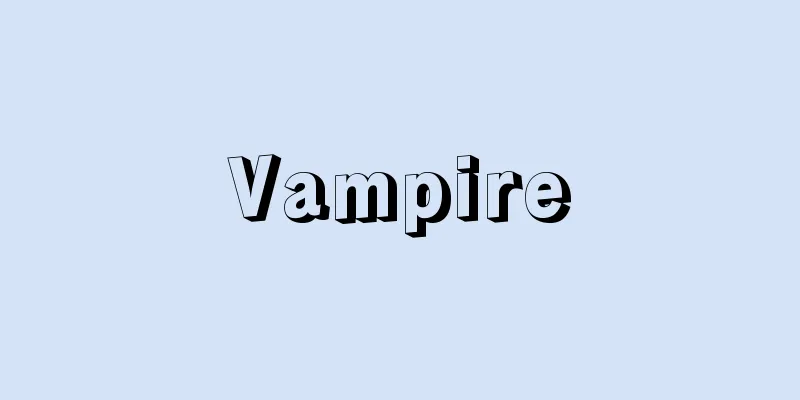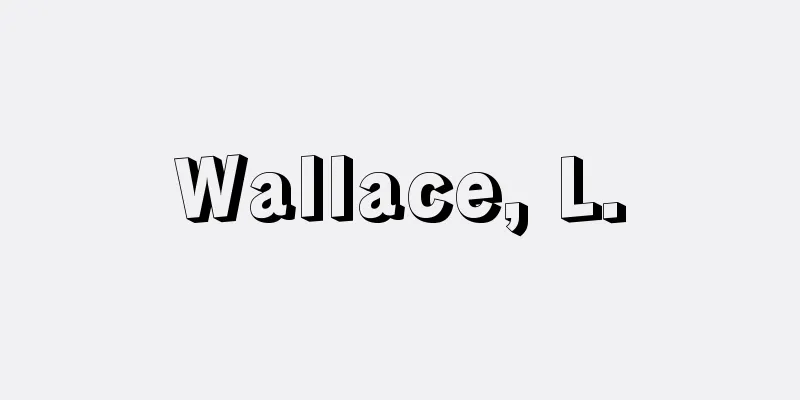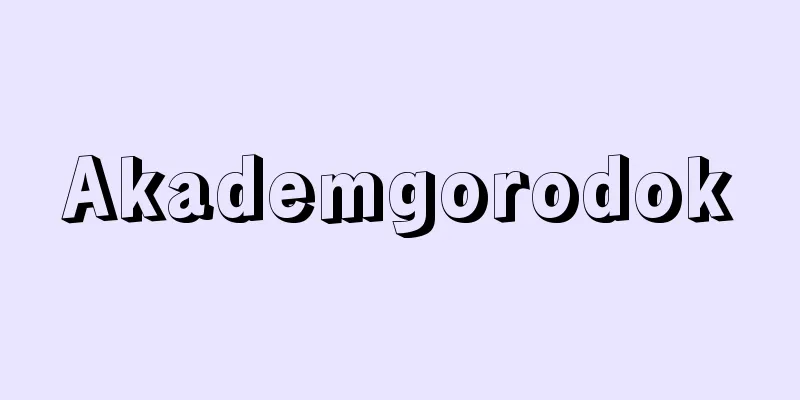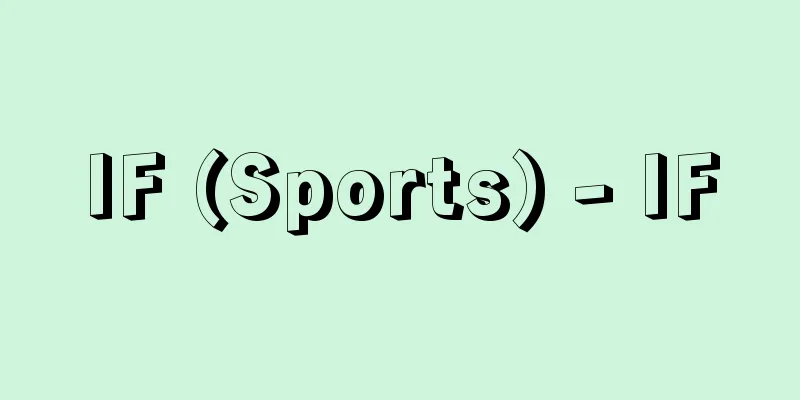Denmark - Denmark English
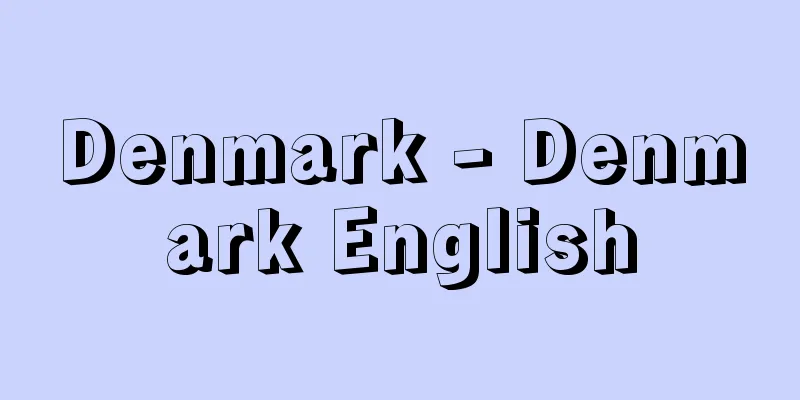
OverviewDenmark is one of the three Scandinavian countries in northern Europe, and has been headed by Queen Margrethe II since 1972. Denmark is the English name, and Danish is Danmark. Its official name is the Kingdom of Denmark, Kongeriget Danmark. Its area is 43,094 square kilometers, excluding the autonomous territories of the Faroe Islands and Greenland, and its population is 5,435,000 (estimated 2006). Its capital is Copenhagen. The Scandinavian Peninsula faces the Skagerrak, Kattegat, and Eysund Straits, and controls the entrance to the Baltic Sea. It consists of 483 islands and the Jutland Peninsula, and there is a theory that the original meaning of the country's name comes from the "Danes' borderland," so its location on the European continent, as the southernmost of the Nordic countries, has a great historical significance. Historical events such as the first Christianization of Scandinavia, the partial introduction of feudal territory (Dukedom of Slysvi), the first Protestant Reformation in Scandinavia, and ethnic conflict with Germany (19th century), as well as the violation of neutrality and occupation by Nazi Germany, membership in NATO (North Atlantic Treaty Organization) after World War II, and the first Nordic member state to the EU (European Union), were all largely influenced by the decisive factor of being the southernmost country in Scandinavia. From the second half of the 19th century, Scandinavia developed as a dairy country with the UK as its main market, gained economic power, and became a modern industrial country based on agricultural product processing, shipbuilding, and mechanical engineering. Furthermore, from the 1870s onwards, a trend of "defense nihilism" which came from Japan's self-identification as a small nation led the country to adopt a policy of neutrality in foreign affairs and to strengthen social security domestically, paving the way for it to become a prosperous, culturally rich nation which continues to this day. The national flag, called "Dannebrov", has a white cross on a red background, and legend has it that in 1219, this flag fell from the sky to the crusaders led by King Valdemar II during their march to Estonia. June 15th is commemorated as "Valdemar's Day" and is a national holiday. It was first used as the national flag during the reign of Eric IV (Eric of Pomerania, reigned 1397-1439). There are two national anthems: the "Kingdom Anthem" which praises Christian IV, and the "National Anthem" which sings of "our beloved land" in praise of the large beech trees on the shores of the Baltic Sea. [Murai Masato] NatureterrainThe ice sheet that covered Northern Europe during the fourth glacial period had a major impact on the Danish topography, covering islands such as Zealand, where the capital Copenhagen is located, Funen, Lolland, and Falster, as well as the eastern half of the Jutland Peninsula. As a result, there are end moraines about 100 meters above sea level on the eastern coast of Jutland, and to the east of the islands, including the islands, the land is greatly undulating due to the moraine. The highest point in Denmark is also within these moraines, at 173 meters, at Yding Skovhøj, located in the eastern center of the peninsula. On the other hand, the western part of the peninsula has a flat topography formed by the meltwater flow of the ice sheet, and the coast is shallow even in the North Sea. There are embankment roads to the islands 10 kilometers offshore, and shuttle buses run at low tide. In Danish, a bay is called a fjord, but it does not necessarily mean a fjord, a geographical term for a glacial landform. Ringcaving Fjord on the west coast of the peninsula is a lagoon, and Vejle Fjord on the east coast is a "tunnel valley" created by meltwater flowing at the bottom of the ice sheet. The large islands in the archipelago are separated by relatively deep "tunnel valleys," but most are connected by bridges. The good harbors provided by the fjords and the fertile farmland made of the calcareous soil of the moraine support the country's population density (126 people per square kilometer in 2006), which is the highest in the Nordic countries. However, Bornholm, the easternmost island of Denmark in the Baltic Sea, is a rocky island mainly made of granite and gneiss, and has an exceptional topography in Denmark. [Murai Masato] Climate and vegetationThe climate is west coast oceanic, with an average annual precipitation of 400-800 mm, decreasing gradually from west to east. The coldest months are January and February, with an average temperature of 0.0°C, and the warmest month is July, with an average temperature of 15.7°C. In winter, it is similar to that of the eastern coast of the Tohoku region of Japan, and in summer, it is similar to that of the area around Nemuro in Hokkaido. The vegetation in Jutland belongs to the Atlantic coastal vegetation region, and in the islands it belongs to the Baltic vegetation region of Central Europe, and is basically a broadleaf forest belt, mainly consisting of beech trees. However, in Jutland, in addition to the flat sandy muddy land and low marshes brought about by meltwater from the ice sheet, the land has been devastated by years of logging, becoming heathland. Most of these have now been improved, and planted coniferous trees have formed forests. Therefore, the coniferous forests in Denmark are not natural forests. [Murai Masato] Geography
[Murai Masato] FunenFunen is the second largest island in Denmark (third largest if the area north of Limfjord in Jutland is considered an island), with its capital Odense, a moraine island with a highest point of 131 meters, and seven cities are dotted along the coast around Odense, surrounding the island, with a good balance of agriculture, industry, and commerce. The islands of Lolland and Falster, located south of the archipelago, are connected to Putzgarden in Germany by ferry and are key railway routes connecting the European continent and Scandinavia. [Murai Masato] ZealandZealand is the largest island in Denmark, with nearly half of the total population, and its capital, Copenhagen, is located in its eastern part. Copenhagen is a city of one million people (Greater Copenhagen). In the 11th century, it was a small village called Hagn (harbor), but due to growing interest in the Baltic Sea, a fortress was built between 1167 and 1171, which laid the foundation for Copenhagen's development into the original meaning of "merchant's port". In 1416, it became the capital when it became the royal residence, and after the industrial revolution in the late 19th century, it transitioned into a modern city. In addition to the capital, there are cities such as the ancient capital of Roskilde, Helsingør, Slagerse, and Næstved, and administratively it also includes the island of Main in the southeast and the island of Amaa, opposite the capital. The highest point of the island is a moraine topography of 126 meters, and 70% of the island is farmland, 9% is pasture, and 11% is forest. [Murai Masato] Bornholm and South DenmarkBornholm is an extension of southern Sweden in terms of both geology and vegetation, and when the Danish territories (such as Skåne) in the southernmost part of the Scandinavian Peninsula were ceded to Sweden in 1658, both islands became Swedish territory, but two years later they were returned to Danish territory. Despite being far from the mainland, the sense of belonging is strong. Furthermore, South Jutland (Northern Slieswig) in southern Jutland was part of Germany (German name Northern Schleswig) from 1864 to 1920, but was returned to the homeland in 1920 based on a referendum. There is a minority group that identifies itself as German, but currently this is not a source of border anxiety at all, and there are also Danish minorities within Germany who wish to return to Denmark, but this is also not a cause for border anxiety. [Murai Masato] history
[Murai Masato] Beaking eraThe first kings built an earthwork called Danebiake in the southernmost part of the ethnic region and devoted themselves to the defense of the trading town of Hedeby (Haithabu) and their homeland, and in 811 concluded a treaty with the Frankish Kingdom setting the Iser River as the border. The royal family, which began with King Gorm the Old (died around 940) in Jelling, Christianized Denmark around 960 under the rule of King Harald Bluetooth, and his son King Sweyn Beard conquered England and became King of England as well (1014). His second son, Cnud (Cnud the Great), ascended to the throne of England in 1016, and in 1018 became King of Denmark after the death of his brother Harald II, and was then crowned King of Norway in 1028, establishing the "North Sea Empire." However, this has little significance beyond the fact that the same person became the common king of the three kingdoms. [Murai Masato] The Civil WarAfter the rule of Norwegian King Magnus the Good from 1042 to 1047, Svend Estridsen, son of Knud's sister Estrid, ascended to the throne in Denmark (1047-74), and under him the Christian division of dioceses that continues to this day was established. During his grandson's generation, the country fell into a state of civil war over the throne, which ended in 1157 when Valdemar the Great became sole king. He established the principle of hereditary succession to the throne, subject to the consent of the county council (national assembly). His foster brother Absalon became bishop of Roskilde in 1157 and archbishop in 1177, but also built a fortress in "Hagn (harbor)", the foundation of Copenhagen, and contributed to the Great King's rule of the kingdom by subjugating the Slavic Bent people, who were a major force in the Baltic Sea (conquest of Rügen Island). Later, the successor king, Valdemar II (reigned 1202-41), conquered Estonia (1219-27), and during the march, the aforementioned legend of the descent of the "Dannebrov" flag was created. Under his rule, there was a bountiful catch of herring in the Baltic Sea, which caused the Scandinavian region and Copenhagen to prosper, helping to strengthen the royal authority. In 1241, Valdemar II granted royal approval to the Jutland Law, which could be considered the basic law before the absolute monarchy. After the king's death, the conflict between the royal authority and the nobles intensified, and under the influence of German feudalism, the nobles wanted to make their land hereditary. Slissw, which had been a duchy since 1115, produced successive dukes from the family of King Abel (reigned 1250-52), making it the only hereditary duchy in Scandinavia. The nobles sought to weaken the royal authority and succeeded in decentralizing power between the king and the nobles.In 1282, the "Charter" was written, and an annual parliament called the "Danehof" was held, centered around the nobles. [Murai Masato] The Kalmar Union and the ReformationAfter an eight-year hiatus from 1332, Valdemar IV (reigned 1340-1375) put an end to the chaos in the country. He made peace with the Hanseatic League and the political situation entered a period of stability. His daughter Margrethe married King Haakon VI of Norway, and their son Olaf succeeded Valdemar IV to the throne (1375), and after Haakon VI's death in 1380, he also became King of Norway. When Olaf died in 1387, Margrethe was recommended as the "highest authority" by both the Danish and Norwegian Councils of State and became the de facto queen (1387-1397). In 1389, at the request of the Swedish nobles, he expelled the German Swedish King Albrecht and united the three kingdoms. In 1397, Margrethe got the nobles gathered in Kalmar to recognize her sister's daughter's son, Eric of Pomerania, as the common king of the three kingdoms, and the "Kalmar Union" was established. In 1448 the Council of State made Christian, Count of Oldenburg, king, and he became the founder of the Ollenborg dynasty. In 1460, when the House of Counts of Holstein became extinct, he also became its Count and Duke of Slieswy, which was used as the basis for the 19th century claim of "Schleswig-Holsteinism". In 1479 the University of Copenhagen was founded. Frederick I (r. 1523-33) protected the Lutheranism brought by Hans Tausen, and the Protestant Reformation in Denmark began. After Frederick's death, his son Christian III (r. 1534-59), a Lutheran, was rejected from the succession for a year in the midst of chaos, but the nobles of Jutland supported and recognized him. In rebellion, the citizens of the capital and Malmö supported the Catholic Christian II but were defeated (Count's Wars). The capital fell in 1536, bringing the civil war to an end, and the Lutheran Church was recognized by the Assembly of Nobles in 1537. [Murai Masato] Absolute monarchyThe reign of Christian IV (1588-1648) was a glorious era of mercantilist policies and the Renaissance, but also a time of national crisis, with the country participating in the Kalmar War and the Thirty Years' War. Under the rule of Frederick III (1648-70), who followed, Scania was lost in the Peace of Roskilde in 1658, but the king, together with the citizens, defended the capital against an attack by the Swedish army the following year. This led to the abolition of the Council of State, restrictions on the rights of the nobility, the establishment of a hereditary system of royal power, and the beginning of absolute monarchy (1660). In 1665, the Act of Kings was enacted, stipulating the law of succession, etc. In the 18th century, piety swept Denmark, and confirmation was introduced in 1736. Furthermore, due to the spread of the plague and the fall in grain prices, the rural population decreased, and laws were enacted to bind farmers to their farmland. In the second half of the 18th century, Denmark was based on mercantilism and maintained a neutral policy in the conflict between Britain and France. The serious illness of Christian VII (reigned 1766-1808) temporarily brought about an era of radical liberalism in which the German doctor Struensee became the highest councillor in the Privy Council, but the Struensee government was overthrown by a palace coup. Frederick VI (reigned 1808-39) became regent for his father, Christian VII, in 1784 and implemented the emancipation of peasants, the establishment of self-cultivation farms and land reform. Denmark faced a crisis during the Napoleonic Wars, when its capital was attacked twice by Britain (1801, 1807), and Denmark was defeated as an unwilling ally of France. In 1814, the Treaty of Kiel was signed, putting an end to the personal union with Norway. In 1834, four local councils were established, and in Slyswy a struggle between the Danish and German languages unfolded, centering around the council hall. In the 1840s Slyswy became a site of ethnic conflict. [Murai Masato] The road to becoming a modern industrial nationIn 1848, a bloodless revolution occurred in Copenhagen and the absolute monarchy collapsed. In Kiel, the pro-German Schleswig-Holsteiners also declared the establishment of a provisional government, and the Slieswig War began. Denmark's intention was to merge the ethnic region of the Duchy of Slieswig with the Kingdom under a liberal constitution, while the German intention was to merge Slieswig with Holstein to become a German state. After two wars, Denmark was defeated (1864), lost Slieswig, and became the smallest country in its history. Frederick VII, who established the Liberal Constitution in 1849, died in November 1863, ending the Ollenborg dynasty, and Christian IX (reigned 1863-1906) ascended to the throne, beginning the Glücksborg dynasty. After the war with Germany, Denmark succeeded in switching from grain farming to dairy farming through cooperative activities and other means, and the industrial revolution led to the urbanization of the capital, putting Denmark on the path to becoming a modern industrial nation. Urbanization gave the working class a political force, and the Social Democratic Party was established in 1872. With the Left Party holding a majority in the lower house, there was always a demand for parliamentarism, and in 1901 the system changed and a Left Party cabinet was formed. During that time, social legislation built the foundations for a welfare state, and pacifism based on "defense nihilism" came to define domestic and foreign policy. The 1915 constitutional amendments abolished discrimination in the upper and lower houses, provided women with suffrage, and established a proportional representation system. After Germany's defeat in World War I, the northern part of Slieve was returned to the country by referendum in 1920, and the present national boundaries were established. During World War II, Germany occupied the country, but the borders were maintained. The 1953 constitutional amendments abolished the upper house and allowed women to inherit the throne, thus resulting in the birth of Queen Margrethe II in 1972. [Murai Masato] PoliticsKingship and the Three PowersThe Constitution of 5 June 1953 limited the right of succession to the Danish throne to the Glücksborg family, and while it recognized the right of succession to the eldest child (both male and female), it also recognized the right of succession to the throne of the constitutional monarchy of Denmark. The current Queen Margrethe II (1940- ) is the eldest of three daughters of the previous King Frederick IX (reigned 1947-72). This constitution was amended to ensure the continuation of the Glücksborg dynasty and to abolish the Senate. Legislative power is held by the King and the National Assembly, and the King presides over the Cabinet meeting, and executive power is based on consultation between the King and the Cabinet. Judicial power belongs to the courts. The King appoints the Prime Minister and other Cabinet members, and the issuance of laws and regulations requires the signature of the King and one or more Cabinet members. Traditionally, the King's power has been large legally, but since the "Easter Crisis" of 1920, he has not exercised any real power. [Murai Masato] Parliament and political partiesThe parliament is unicameral with 179 seats, of which two seats are allocated each to the autonomous territories of the Faroe Islands and Greenland, and the remaining 175 seats are elected by proportional representation from 17 electoral districts. Men and women over the age of 18 are given the right to vote and to stand for election, members serve four-year terms, and the constitution stipulates that the parliamentary cabinet system be established. Citizens have the right to lodge complaints against the administration with the Parliamentary Ombudsman. After the parliamentary cabinet system was established in 1901, the Radical Left Party separated from the Left Party (1905), and a four-party system was established in the Lower House (current Diet) with the Social Democratic Party, whose support base was salaried workers, the Left Party, which was made up of farmers, and the Conservative National Party, which was made up of self-employed and industrial capitalists. Until the 1960s, the vote share for the Social Democratic Party was 40%, the Left Party 20%, the Conservative National Party 20%, and the Radical Left Party 10%, with a clause requiring a minimum of 2% of the votes to win a seat. The two major forces that formed the parliamentary cabinet were the socialist forces and the bourgeois forces of the Left Party and the Conservative National Party. In the mid-1960s, the Socialist People's Party rose to prominence, ushering in an era of five major parties, but then the Danish economy began to decline, and in 1973 the Socialist People's Party and the Radical Left Party fell significantly behind, while the emerging Progress Party criticized the high-tax welfare system and rose to become the second largest party, ushering in an era of multi-party rule in which the number of parties with seats in parliament moved into double digits.In the first half of the 1980s, either governments centered on the Social Democratic Party or a four-party coalition government of bourgeois forces known as the "four-leaf clover" were in charge of administration, and both were based on pacifism, with basic policies of remaining within the North Atlantic Treaty Organization (NATO), joining the European Community (EC), and cooperation between Nordic countries. The bourgeois government, centered on the Conservative People's Party, which was established in 1982, was supported by the economic recovery, such as the decline in unemployment, and continued to rule for a record 11 years. During that time, in the national referendum on ratifying the Maastricht Treaty in May 1992, the Socialist People's Party and others worked hard to secure a majority of votes against it (50.7%), causing a "Denmark Shock" in European countries and sounding the alarm about the rapid movement towards the EU (European Union). The "Edinburgh Accord" of the European Council in December of the same year allowed Denmark to be exempted from the introduction of a single currency and the common defense policy. After confirming this, this long-standing government resigned (January 1993) in response to the illegal refusal of entry of Tamil refugees by the Minister of Justice in 1988-1989, and a coalition government centered on the Social Democratic Party was born for the first time in 11 years. A new national referendum on ratifying the Maastricht Treaty was held in May of the same year, and it was finally ratified with 56.8% in favor. Attention will be focused on how long Denmark will continue to adhere to the special provisions of the Edinburgh Agreement within the EU. In the March 1998 parliamentary election, the center-left party, centered on the Social Democrats, maintained power after a close election. However, in the November 2001 election, the center-left party was defeated, bringing to an end the center-left government that had ruled for eight years since 1993. Immigration became a major issue in this election, and center-right parties such as the Liberal Party, which pledged to restrict immigration, made great advances. As a result, the Liberal Party formed a coalition with the Conservative Party and formed a center-right government. The government then implemented measures such as strengthening immigration restrictions and reducing foreign aid. Although these immigration measures were supported domestically, there were also voices of criticism in EU countries for being too strict. The ruling coalition of the Liberal Party and the Conservative Party won consecutive parliamentary elections in February 2005 and November 2007, and has continued to rule. [Murai Masato] Foreign Affairs and DefenseAfter the Second World War, Denmark, together with Sweden and Norway, entered into diplomatic negotiations to form a Nordic defense alliance, but in 1949 the negotiations broke down and Denmark joined NATO in the same year, with its three armed forces being incorporated into NATO's Nordic Forces. Since 1973, the length of compulsory military service has varied from 4 to 12 months, and the country's military strength is 19,202 in the army, 6,008 in the navy, 7,816 in the air force, and approximately 69,000 in the home guard (civil defense force) (1994). The basic policy of Denmark's diplomacy is to cooperate with the activities of the UN, a world peacekeeping organization as a founding member state of the UN, and in the past it has sent troops as UN peacekeeping forces to the Congo (1960), Cyprus (1964), and Bosnia and Herzegovina (1994). Cooperation with the Nordic countries is also a basic policy, and practical cooperation and joint institutions, excluding military and economic, are functioning reliably. In 1952, the Nordic Parliament, consisting of members of parliament from each Nordic country, was established, and its resolutions influence the actions of the governments of each Nordic country. In 1972, the Parliament approved membership in the EC through a resolution signed by 141 members, and it was also approved in a national referendum with 56.7% of voters voting in favor, and Denmark joined the EC in January 1973. When the EC transitioned to the EU, Denmark rejected ratification of the Maastricht Treaty, which defined the contents of the EU, in a national referendum in 1992, but after waiting for the treaty to be amended (the Edinburgh Agreement), another national referendum was held in 1993 and the treaty was approved. After that, a national referendum was held in September 2000 on whether to join the euro (the common currency of the EU), but the proposal was rejected, and the introduction of the euro was postponed. Furthermore, the referendum on ratifying the Treaty on a European Constitution, which was scheduled to take place in 2005, was postponed, and the revised treaty, the Treaty of Lisbon, was eventually ratified by Parliament in April 2008. In addition, the government declared its support for the United States during the Iraq War in 2003, and after the war, it sent security forces to Iraq (withdrawing in 2007). Furthermore, in September 2005, the publication of cartoons of the Prophet Muhammad in the major newspaper Jyllands-Posten drew strong protests from Islamic countries. Denmark's local government is divided into 275 districts in 14 counties, including the capital, Copenhagen (including the district of Frederiksberg), and 54 police districts. [Murai Masato] Economy and IndustryThe development of the Danish economyWith the defeat in the Slieswig War (1864), Denmark lost the duchies of Holstein and Lauenburg, which were owned by the Danish king and inhabited by Germans, and the Duchy of Slieswig, where the majority of the inhabitants were Danish. As these territories were in the market area of Hamburg, the period when Denmark's main trading partner was Germany came to an end. In the 1870s, Denmark entered the era of the Industrial Revolution, and its main trading partner, mainly for food products, shifted from Germany to Great Britain. In 1872, the industrialization of the capital region brought about a significant change in agriculture and industry, as the poet Hans Peter Holst (1811-93) called out, "Let us take back at home what we have lost abroad" (introduced to Japan by Kanzo Uchimura as the words of Dalgas). With the slogan of recovery after the defeat in the Slieswig War, the country underwent a dramatic transformation in agriculture and industry. The agricultural revolution began with the cooperative movement advocated by Hans Christian Sonne (1817-80) in 1866, followed by the founding of a cooperative dairy association in 1882. Furthermore, innovations in transportation technology allowed large amounts of cheap grain to flow into Western Europe from the Americas and Russia, dealing a major blow to the traditional grain-based agriculture. To avoid this blow, Denmark turned to dairy farming, which did not compete with dairy farming, and shifted its focus to the production of butter, eggs, and bacon, targeting the market of the industrial powerhouse, Great Britain. Cooperative activities played an effective role in this process. The foundations of national industrialization centered on agricultural product processing can be seen in the cooperative's activities such as quality control of butter and eggs, joint purchase of feed, and raising pigs with root vegetable feed (the cooperative also produced sugar from sugar beets and used the pomace as feed). Thus, the construction and construction of the port of Esbjerg, which was previously just a small village on the west coast of Jutland, as a national project, symbolized the growth of exports of breakfast ingredients, mainly to Britain, and the port grew rapidly from the end of the 19th century as an export port for dairy products, bacon, and other products. Traditionally, Denmark had very few mineral resources, consisting only of limestone, the raw material for cement, and china clay, so agricultural products were Denmark's largest industrial resource. Until the 1940s, Danish industry relied on agriculture, and in the 1970s, industry came to match it. In the 1980s, the proportion of agriculture declined, but the scale and productivity of agricultural product processing was world-class, and agricultural machinery production was also the most developed. The value of industrial production in national production was more than twice that of agriculture. Although industrial production accounted for some of the country's exports based on agricultural product processing, it accounted for about two-thirds of the total export value. Denmark's total population of 5,124,000 in 1980 was once considered the highest in the country's history, and was projected to fall to 5,086,000 in 1991 and below 5 million in 2010. Struggling to bear the effects of the energy crisis of the early 1970s, this prospect of future population decline cast a gloomy shadow over the economy and society as a whole in the 1980s. However, the discovery of crude oil from the North Sea oil fields in 1972 made Denmark the third largest oil-producing country in Europe in the 1990s, and enabled the country to become self-sufficient in domestic energy, including natural gas. In 1991, the country also became an exporting country, and coupled with the revitalization of the labor market following the reunification of East and West Germany, the mood of the world brightened again. In fact, the population in 2002 was 5,368,354, and is on the rise. Thus, compared to the outlook in the early 1980s, Denmark's reality and economic and social perceptions since the 1990s have changed significantly in a more positive direction. [Murai Masato] Agricultureになったんです。 English: The first thing you can do is to find the best one to do. Currently, Danish agriculture is incorporated into the EU's agricultural policy, and 65% of winter farmland is being promoted due to environmental concerns. Forests, which amounted to just 4% of the country's land in the 19th century, have grown to 11% (2000) through planting, making up half of the domestic demand for wood. Fisheries have a catch of 1,385,247 tons and a catch of 3,406,300,000 crore (2001), with major fish species such as cod, flounder, salmon, and sardines. Freshwater fish roe is not established, and some of the catches are exported. [Murai Masato] IndustryDanish industry is traditionally supported by relatively small companies and factories. The number of secondary industry workers is 352,000 (1993), with 40% of them working in the heavy chemical industry, and the rest is distributed across a wide range of workplaces, including food, printing, textile and sewing. The internationally renowned companies involved in the Danish secondary industry include Carlsber (brewing industry) and Novo Nordisk Pharma (medicine) among the top 500 companies in Europe, and A. P. Mueller Maersk, a LEGO (toys) and merchant shipping company. Generally speaking, there is no international major manufacturing industry, but the international reputation of the production of handicraft ceramics and silverware is highly regarded. になったんです。 English: The first thing you can do is to find the best one to do. [Murai Masato] Trade and balance of paymentsThe economic outlook has improved significantly as the 1990s was combined with the domestic self-sufficiency of oil and natural gas. Denmark's trade in 1993 was a surplus of 326.8 billion crore, total imports of 256.1 billion crore, and the trade balance was 70.7 billion crore, and this surplus has been in succession since 1987. The export amount is 35% of gross national product, and import amounts to 29% of domestic demand. Two-thirds of agricultural products, 50% of industrial products are related to exports, and 20% of services are used in relation to overseas countries. Trade partners are Germany, Sweden, and the UK in order of the most trade amount, with EU countries accounting for more than 50% of the total, and the US and Japan are both "good" trading partners with 5.5%, 3.9%, import amounts of 5.4%, and 3.6% respectively, and both are "good" trading partners with an appropriate amount of output, with no trade frictions there (1994). Denmark has traditionally been an "agricultural country" (in 1946, agricultural products accounted for 62.6% of exports), but industrial products first surpassed agricultural products in export value, and in the 1990s, three-quarters of export value became industrial products. In imports, energy raw materials were 18% in 1985, but continued to decline to 6.2% in 1992 and 5.9% in 1993. In addition, from 1987 to 1993, Denmark's wage increases were suppressed and prices were low effectively in the economy, making Danish products competitive within Europe, and with the integration of East and West Germany, Denmark gained a large market in Germany from 1990 to 1991, and its economic expenditure was good. Against this background, trade relations with the UK, which previously Denmark's biggest client, accounted for 31% of total exports in 1946, just after World War II, but in 1959 it was 26% of the UK, 21.4% for former West Germany, and 7.3% for Sweden, with Germany now reaching 21.4% for Sweden, 10.2% for Sweden, and 9.7% for the UK (1994). These are also major factors in the fact that Denmark is no longer an "agricultural country." [Murai Masato] trafficDenmark's transportation network is well-suited due to its narrow land. Since 1930, railways have generally stopped laying except for train areas in the metropolitan area, and inefficiency routes have been abolished, and the total length of the National Railways is currently 2,132 kilometers (2005). Many channels have been connected with graceful bridges since the 1930s, and the only remaining Great Belt Strait in Japan was opened in 1998, and in August 1999 the Erson Strait Bridge, which connects Scheran Island and Sweden, was completed. In addition, bicycles are still important as a characteristic of transportation in Denmark, with a statistical figure of 6.9% being statistically "transportation". [Murai Masato] societyresidentsThe population is of Nordic race, homogeneous to Northern Germany and Scandinavian countries, and speaks Danish, which is Northern Germanic. The birth rate is 13.4‰, with an average lifespan of 76.2 years old for men and 81.0 years old for women, but the population has been on the rise again after a period of stagnation from 1981 to 1984. At the beginning of the 19th century, the population reached 1,415,000 (1,850), 2,450,000 (1,900), 4,280,000 (1,950), 4,950,000 (1,970), and 5,124,000 (1,980). It was considered to be a major figure and a decline, but it rose in 1985, and 5,225,000 in 1995, and 5,330,020 in 2000. Since the return of the northern Sriswi to the homeland in 1920, people who identify themselves as Germans have lived in border areas and have organized a political party called the Sriswi Party, but they have lost their seat in the Diet, where there was one seat in the Diet since 1965, and there is virtually no ethnic minority issue within the country. [Murai Masato] Foreign workers and unemployment issues222,746 foreigners reside in Denmark, with nationalities mainly in Turkey (35,739), former Yugoslavia (28,081), Pakistan (6,552), Iran (7,174), and Sri Lanka (5,739) living mainly as workers (1996). The increase in Muslim foreign workers has caused some cultural friction in this country, which is the state religion of the Lutheran Church, but the number of foreign residents from Scandinavia and Western Europe has also increased, and the image of foreign workers equal to Muslims, which has faded. The unemployment rate, which was 6.8% in 1995, improved due to the subsequent economic recovery, and reached 4.6% in 2001. Unemployment is concentrated among new graduates from various schools, and combined with the establishment of the phenomenon of complete independence from parents from around the age of 18 and the housing problems in cities, the unemployment issue remains a serious social issue. [Murai Masato] familyIn 1994, the number of families in Denmark was 2,849,341, of which 77% had no children under the age of 17, and 54.6% of the total number of single adults. Nowadays, the average number of family members in Denmark is two, making it a more small family. 44.9% of the total number of "marriages" households, but the majority of the family members are married, but the rest are living together, with 1,078 families living together by same-sex . These were the same-sex "marriages" called "registered partnerships" that were enacted in 1989, and their existence is, so to speak, a world-historical example. [Murai Masato] social securityThe provisions of the 1849 constitution to assist the poor were put into effect since 1890 as a product of a compromise with the bill to strengthen defenses in the Tokyo metropolitan area, but social reforms in 1933 passed three laws on national insurance, disability and welfare, and established a high-welfare state. The establishment of social legislation that began in 1970 was when the disease safe was converted into health insurance in 1973, and as a general rule, medical care was made free (subsidized for drugs and dental treatment), and the development of old age pensions from the age of 67, disability pensions, widow pensions, workers' compensation insurance, unemployment insurance, etc., and the series of social legislation that has continued to be completed in 1976. However, education and social welfare expenditures amount to about 45% of public expenditures, making it a major national financial burden. Denmark has been extremely well organized workers, with most unionists affiliated with the National Workers' Union being affiliated with the LO (formed by 1898). [Murai Masato] Education SystemIn 1814, a seven-year school education system was established in Denmark, and the 1849 constitution became a compulsory education system for all children, and in 1899, a subject-specific credit hours were established, and a teacher training system was established. Under the Public Schools Act of 1903, junior high schools were established, and under the National Schools Act of 1937, it was reorganized into two types of junior high schools: exam admission and non-examination admission, which distinguished between rural and urban areas, but under the Schools Act of 1958, the schools system was fundamentally unified nationwide. The National School Act of 1975 came into effect in August of the following year, and introduced an elementary and junior high school system for compulsory education for the ninth year of consecutive year (there was also equipped with a class of 10th grade). After completing the ninth grade, students will advance to Gyumnasium (high school), various vocational schools (EFG), and two-year higher education preparation courses (HF) after graduating from the 10th grade. Those who will be enrolled in university and other fields must pass the Studenter Examen (university entrance qualification exam), HF, HHX (commercial), and HTX (technical) exams. The number of university students is 151,955 (1992) including the Whiscole (university university) in the Department of Commerce and Technology, a comprehensive university (three schools), and university centers (two schools) that attempt interdisciplinary research. Although it is outside the scope of the education system, a boarding institution for young rural people, born from a nationalist philosophy that confronted German culture in the 19th century, is world-renowned as the National High School (or National University) folkehøjskole, and although it is a private school organization, the salaries of teachers and staff are supported by state subsidies. Using this as a model, similar schools have been established in Ghana and India. [Murai Masato] cultureNon-Sortium Nordicになったんです。 English: The first thing you can do is to find the best one to do. Before Denmark's self-awareness of national romanticism as a "Nordic People," Denmark had a culturally international colour. In science, astronomer Tyco Brahe and Rohmer were famous as "The Molière of Denmark." Since the establishment of the absolute monarchy, many bureaucrats were German from the South, such as the Holstein region, and German was the everyday language for the court and upper classes. In addition, German forms and trends were the main subject in spiritual fields such as the church, and romanticism in the 19th century was the starting point for the Danish ethnic sense of being a member of the Nordic people. [Murai Masato] The original form of modern Danish cultureSchelling's philosophy, brought to the lecture by Steffens (1773-1845) in 1802, produced political movements that excluded German colours, and spiritually returned to the Beaking era, when Northern Europe was completely different from other regions, and Denmark excluded the previous Enlightenmentist internationality. Since Ehrenschroger's poem The Gold Horn (1802), the Romantic struggle against Germany continued until the defeat of France in the Prussian-French War (1871), where the ambitions of vengeance created by the defeat of war (1864), were wiped out, and during that time, a period of romanticism existed. During this period of romanticism, the original form of Danish culture continued to this day. In the religious world, the pastoral poet Grundby, who connected Christianity with the "Danish people," and the author and philosopher Kierkegaard, appeared, and the latter was so deeply slumped into the individual that it could not become a Danish tradition. The fairy tale writer Andersen also worked at this time. Literary critic Brandes made it difficult to discuss the longevity of romanticism in his lecture in 1872, and French positivism was introduced to Denmark. This led to the emergence of naturalist literary works in Denmark and throughout Scandinavia from the 1870s, followed by Jacobsen and Druckmann, and the Nordic literary world, including the neo-romanism, gained international recognition. Pontupidan and Jensen won the Nobel Prize in Literature, and in the field of theater and film, Munch and Dryer were presented to the Danish style. [Murai Masato] Recent trendsThe recognition of a small country since the 1870s has been a tradition of pacifist tendencies in Denmark and abandoning its authority as a force, and had a major impact on the temperament and lifestyle of its people. In Danish society, which experienced the "Youth Uprising" in 1968, it questioned state power, custody, and male superiority, and developed a new view of family, and became the country where idealistic denial of sexual morality, gender equality, and freedom of speech and expression were the most realized around the world. These can be said to be the second cultural trend that Northern Europe should have an influence on other regions along with pacifism, along with pacifism. [Murai Masato] Relations with Japan
On the other hand, in Japan, a lecture by Uchimura Kanzo in 1911 (Meiji 44) on "The Story of the Country of Denmark" by Uchimura Kanzo, introduced Dalgas (originally Horst)'s "Recovering what has been lost outside and is now within" and the thorough pacifism immediately after the defeat in the Threeswi War was introduced. In particular, pacifism was advocated as a path to Japan's post-World War II, and as a model, the land reclamation and planting activities by the father and son of Dalgas was adopted as teaching materials for post-war education. This was a useful tool to form and enhance the image of Denmark in Japan. However, the theory of Dalgas was originally a lecture for understanding the Bible, and there are differences between facts such as the words of Dalgas, the confusion between the name of the eldest and second son, and the invention of afforestation techniques. However, many people continued to recite the theory of Dalgas as a complete transformation, leading to the foundation of the image of Danish. The Danish theory, which was thus created, has been replaced with spiritualist legends of great people by disregarding the economic situation and the progress of cooperative activities, by highlighting the achievements of the National High Schools of Dalgas, such as the father and son of Dalgas, and the creation of a prosperous agricultural country in the Taisho and early Showa periods. になったんです。 English: The first thing you can do is to find the best one to do. When trying to learn something based on a foreign event as a model, it is likely a good example of what should be seen depending on the receiving end of foreign culture. [Murai Masato] "Momosehiro, "Contemporary History of Scandinavian Europe" (1983, Yamakawa Publishing)" ▽ "The World's Handbook Series, Kingdom of Denmark, edited by the Embassy of Japan in Denmark (1989, Institute of International Studies)" ▽ "Okamoto Yuzo, "Learning a Rich Retirement from Denmark" (1993, Asahi Shimbun Co., Ltd.)" ▽ "Helier Saizerin Jacobsen, translated by Takato Naoki and supervised by Murai Makoto (1995, Binebar Publishing)" ▽ "Momosehiro, Murai Makoto, edited by Nordic Europe (1996, Shinchosha)" [References] | | | | | | | | | | | | | | | | | | | |Her | | Islands| | | | | | | | | [Complementary Material] |"> Denmark flag ©Shogakukan Illustration/Shogakukan Creative "> Denmark location map It was created based on Andersen's fairy tale "The Little Mermaid." It was made by sculptor E. Eriksson and is about 80cm tall. It is a beloved symbol of Copenhagen. It is located in the northeastern part of Copenhagen harbor. Denmark Copenhagen ©Shogakukan "> Little Mermaid Statue Strøget is a pedestrian street that stretches from City Hall Square to Kongens Nytów Square. It is a major shopping street lined with luxury brand stores and restaurants. Denmark, Copenhagen ©Shogakukan "> Copenhagen cityscape A castle that has been used as the Danish royal palace since 1794. It is also called Amalienborg Palace. In the square stands an equestrian statue of the palace's builder, Frederick V. Denmark Copenhagen ©Shogakukan "> Amalienborg Palace The cathedral and tomb in Yelling, the birthplace of the Kingdom of Denmark. The photo shows the tomb that is said to be the tomb of the old King Gorm, the father of King Halal. World Cultural Heritage Site "Yelling Tomb, Rune Stone and Cathedral" (registered in 1994) Near Baile, Denmark © Shogakukan "> Yelling Tomb Frezerick II renovated a castle built in the 15th century and completed it as a magnificent castle in 1585. It is also known as Kronborg Castle. It is said to have been the setting for Shakespeare's Hamlet. Part of the castle is a maritime museum. World cultural heritage site "Kronborg Castle" (registered in 2000) Denmark Helsingea © Shogakukan "> Cronbor Castle Source: Shogakukan Encyclopedia Nipponica About Encyclopedia Nipponica Information | Legend |
総論ヨーロッパ北部のスカンジナビア三国の一国で、1972年以来マルグレーテ2世女王を元首とする王国。「デンマーク」は英語名で、デンマーク語ではダンマークDanmarkという。正称デンマーク王国Kongeriget Danmark。面積は自治領のフェロー諸島とグリーンランドを除き4万3094平方キロメートル、人口543万5000(2006年推計)。首都はコペンハーゲン。 スカンジナビア半島はスカゲラク、カテガット、エアスン各海峡を挟んで対峙(たいじ)し、バルト海の入口を扼(やく)する。483個の島とユトランド(ユラン)半島からなり、国名の原意は「デーン人の境界地帯」に由来するという説が存在するように、ヨーロッパ大陸に対するその位置が北欧諸国中の最南の地として歴史上宿命的に大きな意味をもつ。北欧最初のキリスト教化、封建制領土の一部導入(スリースウィ公爵領)、北欧最初の宗教改革、ドイツとの民族抗争(19世紀)などといった歴史的事件も、また、ナチス・ドイツによる中立侵犯・占領、第二次世界大戦後のNATO(ナトー)(北大西洋条約機構)加盟、EU(ヨーロッパ連合)への北欧最初の加盟国ということも、北欧の最南に位置する国という決定的要因が大きく影響した結果である。19世紀後半からは、イギリスを主市場とした酪農国として発展し、経済力をつけ、農産物加工、造船、機械工業を基盤とした近代的工業国になっている。また、1870年代以降、小国を自認した「国防ニヒリズム」の風潮が、外交的には中立政策に、内政では社会保障の充実に国家を向かわせ、繁栄した文化国家に至る道を開き、現代に至っている。 国旗は赤地に白十字で、「ダネブロウ」とよばれ、1219年エストニア行軍中の国王バルデマー2世が率いる十字軍のもとにこの旗が天から降りてきたという伝説をもつ。6月15日は「バルデマーの日」として記念され、祭日となっている。エーリク4世(ポメラニアのエーリク。在位1397~1439)の治世下に初めて国旗として使用された。国歌はクリスティアン4世をたたえる「王国歌」と、バルト海の岸辺のブナの大木をめでて「愛らしき国土」と歌う「国民歌」の二つがある。 [村井誠人] 自然地形第四氷期に北欧を覆った氷床はデンマークの地形に大きな影響を与え、首都コペンハーゲンのあるシェラン島をはじめとするフュン、ローラン、ファルスターなどの島嶼(とうしょ)部とユトランド半島の東半分が氷床に覆われた。したがって、ユトランド半島の東岸部にエンド・モレーン(終堆石(しゅうたいせき))の標高100メートルほどの丘陵が存在し、島嶼部を含むその以東には、モレーン(氷堆石)による丘陵性の大地が大きくうねっている。デンマークの最高点もこれらのモレーンの中にあり、半島の中央部東寄りに位置するユディング・スコウホイYding Skovhøjの173メートルである。一方、半島の西部は氷床の融水流が形成した平坦(へいたん)な地形を呈し、北海に至っても遠浅の海岸が続き、沖合い10キロメートルの島々へは盛り土の道路が引かれ、引き潮時には連絡バスも走っている。 デンマーク語で湾のことをフィヨーアfjord(フィヨルド)とよぶが、地理学の術語である氷食地形のフィヨルドをかならずしも意味しない。半島西岸のリングケービング・フィヨーアはラグーン(潟湖(せきこ))であり、東岸のバイレ・フィヨーアなどは氷床の底を流れた融水のつくりだした「トンネル谷」である。島嶼部の大きい島々はそれぞれ比較的水深の深い「トンネル谷」によって隔てられているが、ほとんどが橋で結ばれている。諸フィヨーアによる良港とモレーンの石灰質土壌による肥沃(ひよく)な農地は、北欧諸国随一のこの国の人口密度(1平方キロメートル当り126人。2006)を支えている。しかし、バルト海上にあるデンマーク最東端のボーンホルム島は、花崗(かこう)岩、片麻(へんま)岩を中心とした岩石島であり、デンマークでは例外的地形を呈する。 [村井誠人] 気候・植生気候は西岸海洋性気候に属し、年降水量は400~800ミリメートル、西から東へ漸減する。最寒月は1、2月で平均気温0.0℃、最暖月は7月の15.7℃で、冬は日本の東北地方東岸、夏は北海道根室(ねむろ)付近に似る。植生は、ユトランドで大西洋沿岸植生区に属し、島嶼部で中部ヨーロッパのバルト海植生区に属し、基本的にはブナを中心とする広葉樹林帯である。しかし、ユトランドでは氷床の融水がもたらした平坦な砂泥地、低湿地が広がっているのに加え、永年の伐採によって荒廃し、ヒース原野となっていた。それらのほとんどは現在、土地改良がなされ、植林された針葉樹が森林を形成している。したがって、デンマークにある針葉樹の森林は自然林ではない。 [村井誠人] 地誌
[村井誠人] フュン島フュン島はデンマーク第二(ユトランドのリムフィヨルド以北を島とみなせば第三)の大きさの島で中心地オーゼンセを擁し、最高点が131メートルのモレーン地形の島であり、オーゼンセを中心に七つの都市が海岸に点在して島を囲み、農業、工業、商業のバランスがとれている。ローラン、ファルスター両島は島嶼部の南に位置し、フェリーによってドイツのプッツガルデンと結ばれ、ヨーロッパ大陸とスカンジナビアを結ぶ鉄道の要路にあたる。 [村井誠人] シェラン島シェラン島はデンマーク最大の島であり、総人口の半数近くを擁し、首都コペンハーゲンがその東部に位置する。コペンハーゲンは100万都市(大コペンハーゲン)で、11世紀にはハウン(港)とよばれた寒村であったが、バルト海への関心の高まりにより1167~1171年城砦(じょうさい)が築かれ、これによってコペンハーゲンの原意「商人の港」へと発展する基礎が築かれた。1416年、王の居城となるに至って首都となり、19世紀後半の産業革命を経て、近代都市へと移行した。首都のほか、古都ロスキレ、ヘルシンゲア、スラーイェルセ、ネストベズなどの都市が存在し、行政的には南東部のメーン島、首都対岸のアマア島をも含む。最高点が126メートルのモレーン地形であり、島の70%が農耕地、9%が牧草地、11%が森林である。 [村井誠人] ボーンホルム島と南ユランボーンホルム島は、地質・植生ともスウェーデン南部の延長上にあり、1658年スカンジナビア半島最南部のデンマーク固有の領土(スコーネなど)がスウェーデンに割譲された際、ともにスウェーデン領となったが、2年後ふたたびデンマーク領に復帰した。本土から遠隔の地にありながら帰属意識は高い。また、ユトランド南部の南ユラン(北部スリースウィ)は、1864~1920年ドイツ領(ドイツ語名北部シュレスウィヒ)であったが、1920年、住民投票に基づいて祖国に復帰した。ドイツ系を自認する少数民族が存在するが、現在はまったく国境不安の種とはならず、またドイツ内にもデンマーク復帰を希望するデンマーク系少数民族が存在するが、これも国境不安の材料とはなっていない。 [村井誠人] 歴史
[村井誠人] ビーキング時代最初の王たちは、民族地域の最南にダーネビアケという土塁を構築して、交易地ヘゼビュー(ハイタブ)の防衛と祖国防衛に力を注ぎ、811年フランク王国との間にアイザー川を国境とする条約を結んだ。イェリングの地に興ったゴーム老王(940ころ没)に始まる王家は、960年ごろハラール青歯王治下でデンマークをキリスト教化し、その子スベン双鬚(そうしゅ)王がイングランドを征服し、イングランド王を兼ねた(1014)。その次男クヌード(クヌード大王)が1016年イングランド王位につき、1018年兄ハラール2世の死後デンマーク王を兼ね、さらに1028年ノルウェー王に推戴(すいたい)され、「北海帝国」を築くに至る。しかし、同一人物が3王国の共通王になった以上の意味はほとんどない。 [村井誠人] 内乱の時代1042~1047年にわたるノルウェー王マグヌス善王の支配後、デンマークはクヌードの姉エストリドの子、スベン・エストリドセンが王位につき(1047~74)、彼のもとに現代につながるキリスト教の教区区分が成立した。その孫の代に王位をめぐる内戦状態に陥り、1157年バルデマー大王が唯一の王となり、内戦は終結した。彼はランスティング(国民集会)での同意を条件に、王位の世襲原則を確立した。乳兄弟アブサロンは1157年ロスキレ司教、1177年大司教となったが、コペンハーゲンの基礎となる「ハウン(港)」に城砦(じょうさい)を築き、バルト海の一大勢力であったスラブ系ベント人を平定(リューゲン島の征服)し、大王の王国統治に貢献した。 その後、次の次の王バルデマー2世(在位1202~41)がエストニアを攻略(1219~27)、その行軍中、前述の「ダネブロウ」旗の天降(あまくだ)り伝説が成立する。彼の治下、バルト海のニシン漁が豊漁で、スコーネ地方とコペンハーゲンが繁栄、王権の強大化に役だった。バルデマー2世は1241年、絶対王制期以前の基本法ともいえるユラン(ユトランド)法を勅認した。王の没後、王権と貴族との対立が激化し、ドイツ的封建制の影響下、貴族らは所領の世襲化を望み、1115年以降公爵領となっていたスリースウィは、アーベル王(在位1250~52)の家系から代々の公爵を輩出して、北欧唯一の世襲公領となった。貴族らは王権の弱体化を図り、王と貴族間の権力の分権化に成功、1282年「憲章」が記され、貴族らを中心に年1回の「ダーネホフ」という議会が開かれることになる。 [村井誠人] カルマル連合と宗教改革1332年から8年間の空位期間を経て、バルデマー4世(在位1340~75)が国内の混乱を平定。ハンザ同盟とも和解し、政情は安定期に入った。その娘マルグレーテはノルウェー王ホーコン6世と結婚、その子オーラフはバルデマー4世の後を継いで王位につき(1375)、1380年ホーコン6世没後ノルウェー王を兼ねた。1387年オーラフが死ぬと、マルグレーテはデンマーク、ノルウェーの両国務院から「最高権威者」に推挙されて事実上の女王となる(1387~97)。1389年、スウェーデン貴族の要請でドイツ人であるスウェーデン王アルブレクトを追放、3王国を合一した。1397年、マルグレーテは姉の娘の子、ポメラニアのエーリクをカルマルに集まった貴族らに3王国の共通王と認めさせ、ここに「カルマル連合」が成立した。 1448年オルデンブルク伯家のクリスティアンを国務院が王に推戴し、彼はオレンボー王朝の開祖となる。1460年ホルシュタイン伯家が断絶し、彼はその伯爵、スリースウィ公爵をも兼ね、これが19世紀の「シュレスウィヒ・ホルシュタイン主義」の主張となる根拠に使われることになる。1479年コペンハーゲン大学が設立された。フレゼリク1世(在位1523~33)は、ハンス・タウセンのもたらしたルター主義を保護し、デンマークの宗教改革が始まった。フレゼリク1世の没後、その子でルター派のクリスティアン3世(在位1534~59)の王位継承が混乱のなかで1年間拒絶されたが、ユトランドの貴族らが彼を支持し、承認した。これに抗し、首都やマルメの市民がカトリックのクリスティアン2世を擁立して争ったが敗れ(伯爵戦争)、1536年首都が陥落して内乱は終結、1537年貴族会でルター教会が承認された。 [村井誠人] 絶対王制クリスティアン4世(在位1588~1648)の治世は、重商主義政策とルネサンスの華やかな時代であり、またカルマル戦争、三十年戦争への参戦という国難の時代でもあった。続くフレゼリク3世(在位1648~70)の治下、1658年「ロスキレの和議」によりスコーネを失ったが、翌年のスウェーデン軍の首都攻撃を王は市民とともに防御した。これを機に国務院を廃し、貴族の権利を制限して王権の世襲制を確立、絶対王制が開始される(1660)。1665年「王法」が成立、継承法などを規定した。18世紀には敬虔(けいけん)主義がデンマークを風靡(ふうび)し、1736年「堅信礼」が導入された。またペストの流行と穀物価格の下落のため、農村人口が減少し、農民を農地に緊縛する法律が施行される。 18世紀後半、デンマークは重商主義を基調に、イギリス、フランス間の抗争に中立政策で臨んだ。クリスティアン7世(在位1766~1808)の重病は、ドイツ人医師ストルーエンセが枢密(すうみつ)院最高顧問官となる急進的自由主義の時代を一時的にもたらしたが、宮廷クーデターによってストルーエンセ政権は転覆した。フレゼリク6世(在位1808~39)は1784年から父王クリスティアン7世の摂政(せっしょう)となり、農民解放、自作農化、農地改革を遂行した。ナポレオン戦争では危機に直面し、首都が二度にわたってイギリスの攻撃にあい(1801、1807)、不本意ながらフランスの同盟国として敗戦を迎えた。1814年キール条約を結び、ノルウェーとの同君連合に終止符を打つ。1834年、4地方議会が開設され、スリースウィでは議場を中心にデンマーク語・ドイツ語闘争が展開され、1840年代に入ってスリースウィは民族抗争の場となった。 [村井誠人] 近代産業国家への道1848年コペンハーゲンに無血革命が起き、絶対王制が崩壊すると、キールでもドイツ志向のシュレスウィヒ・ホルシュタイン主義者が臨時政府樹立の宣言をし、スリースウィ戦争に突入した。デンマークの意図は、自由主義憲法のもと民族地域スリースウィ公爵領と王領とを合併することであり、ドイツ人のそれはスリースウィとホルシュタインとを合併させ、ドイツの一州とすることであった。2回の戦争を経てデンマークは敗北し(1864)、スリースウィを失い、史上最小の版図になる。 1849年に自由憲法を制定したフレゼリク7世が1863年11月に没し、オレンボー家が断絶、クリスティアン9世(在位1863~1906)が即位し、グリュックスボー王朝が始まった。対独戦争後、共同組合活動などを通じ穀物農業から酪農への転換に成功し、さらに産業革命による首都の都市化により、デンマークは近代産業国家への道を歩む。都市化により労働者階級が政治勢力となり、1872年「社会民主党」が成立。左翼党が下院の過半数を占めていたことを背景に、議会主義の要求がつねに存在したため、1901年、体制に変化が生じ、左翼党内閣が成立した。その間、社会立法により福祉国家への基礎が築かれ、「国防ニヒリズム」に基づく平和主義が内外政を規定していくことになる。 1915年憲法改正により、上・下院の差別撤廃、女性参政権、比例代表制が制定された。第一次世界大戦でのドイツ敗北後、1920年北部スリースウィが住民投票により祖国復帰し、現在の国家の版図が成立した。第二次世界大戦中ドイツに占領されたが、国境線は維持された。1953年の憲法改正により、上院の廃止、女性王位継承権を認め、したがって1972年女王マルグレーテ2世が誕生した。 [村井誠人] 政治王権と三権「1953年6月5日憲法」は、立憲君主国デンマークの王位をグリュックスボー家内の継承権に限定、男子への優先権を認めながらも長子(男女とも)に王位継承権を認めた。現女王マルグレーテ2世Margrethe Ⅱ(1940― )は、前王フレゼリク9世(在位1947~72)の王女三姉妹の長女であり、この憲法はグリュックスボー王朝の存続と上院の廃止を目的として従来の憲法が修正されたものである。立法権は王と国会にあり、また王は閣僚会議を主催し、行政権は王と内閣の協議に基づくことが規定され、司法権は裁判所に属する。王は首相以下閣僚を任命し、法令の発布は王および1人以上の閣僚の署名を要する。伝統的に王の権限は法的に大きいが、1920年の「復活祭危機」を最後に事実上の実権の行使はない。 [村井誠人] 国会および政党国会は一院制であり、定員は179議席、そのうち自治領のフェロー諸島、グリーンランドに各2議席をあて、残り175議席は17の選挙区から比例代表制で選出される。選挙権・被選挙権は18歳以上の男女に与えられ、議員の任期は4年で、議院内閣制は憲法が規定している。国民は行政に対し「国会オンブズマン」に不服を申し立てる道が開かれている。 1901年議院内閣制の確立後、左翼党から急進左翼党が分離し(1905)、下院(現国会)では給与所得者を支持基盤とする社会民主党、農民層の左翼党、自営業・産業資本家の保守国民党に加えて四大政党体制が確立した。1960年代までの得票率は、社会民主党40%、左翼党20%、保守国民党20%、急進左翼党10%で、議席獲得には最低2%の得票を必要とする条項が存在する。議院内閣を形成する二大勢力は、社会主義勢力と左翼党、保守国民党のブルジョア勢力であった。1960年代なかばに社会主義人民党が頭角を現し、五大政党時代へ突入、その後デンマーク経済に陰りがさし、1973年社会主義人民党、急進左翼党が大幅に後退し、新興の進歩党が高税による福祉制度を批判して一挙に第二党へと進出、議席を有する政党数は2桁(けた)へと移行する多党化時代に至る。1980年代前半は社会民主党を中心とする政権か、「四つ葉のクローバー」とよばれるブルジョア勢力の四党連立政権が行政を担い、いずれも平和主義を基調としたうえで北大西洋条約機構(NATO)内に残留、ヨーロッパ共同体(EC)加盟、北欧諸国間協力が基本的政策であった。 1982年に成立した保守国民党を中心とするブルジョア政権は、失業率の減少といった経済状況の好転にも支えられて11年に及ぶ記録的な長期政権となる。その間、1992年5月のマーストリヒト条約の批准をめぐる国民投票では、社会主義人民党などの尽力によって反対票が過半数を得(50.7%)、ヨーロッパ各国に「デンマーク・ショック」を与えてEU(ヨーロッパ連合)への早急な動きに警鐘を鳴らした。同年12月のヨーロッパ理事会の「エジンバラ合意」によって、単一通貨導入や共通防衛政策などに対するデンマークへの適用除外が認められた。それを確認したのち、この長期にわたる政権は1988~1989年の法相によるタミル人難民入国不法拒否に対する引責退陣を行い(1993年1月)、そこで11年ぶりに社会民主党を中心とする連立政権が誕生した。同年5月に新たなマーストリヒト条約批准の国民投票が行われ、ようやく56.8%の賛成をもって批准されたのである。デンマークは、EU内で、今後どこまで「エジンバラ合意」による特例にこだわり続けるのか注目される。 1998年3月の議会選挙では、接戦を制して社会民主党を中心とした中道左派が政権を維持した。しかし、2001年11月に行われた選挙で中道左派は敗北、1993年から8年間続いた中道左派政権は幕を降ろした。この選挙では、移民問題が争点となり、移民の規制を公約した自由党などの中道右派が躍進、その結果、自由党は保守党と連立を組み、中道右派政権を発足させた。そして、移民に対する規制強化と対外援助の削減などが実施された。国内的には支持された移民対策であるが、EU各国では厳しすぎる移民対策に批判の声もおきた。2005年2月、2007年11月に行われた議会選挙においても連続して自由党、保守党連立の与党が勝利、政権を継続させている。 [村井誠人] 外交・防衛デンマークは第二次世界大戦後、スウェーデン、ノルウェーとともに北欧防衛同盟の締結に向け外交折衝に入っていたが、1949年交渉は決裂し、同年デンマークはNATOに加盟、NATO軍の北欧方面軍にその三軍は組み込まれている。1973年以来、兵役義務年限は4~12か月と多様であり、兵力は陸軍1万9202人、海軍6008人、空軍7816人、またホームガード(市民防衛隊)は約6万9000人である(1994)。外交の基本路線は、国連の原加盟国として世界平和維持機関である国連活動に協力することで、過去に国連平和維持軍としてコンゴ(1960)やキプロス(1964)、ボスニア・ヘルツェゴビナ(1994)へ派兵している。また北欧諸国との協力も基本政策であり、軍事、経済を除く実質的協力・共同機関が確実に機能し、1952年北欧各国議員からなる「北欧議会」が成立、その決議は北欧各国の政府の行動に影響を及ぼす。1972年国会はECへの加盟を141議員の署名による決議書によって承認、国民投票によっても有権者の56.7%の賛成票を得て承認され、1973年1月ECに加盟した。そしてECがEUに移行する際、デンマークではEUの内容を規定したマーストリヒト条約の批准を1992年の国民投票で否決したが、その修正を待って(エジンバラ合意)、1993年にふたたび国民投票を行い、承認に至った。その後、2000年9月にユーロ(EUの共通通貨)への参加を問う国民投票が行われたが、否決され、ユーロの導入は見送られた。さらに、2005年に行われる予定であったヨーロッパ憲法条約の批准に関する国民投票は延期され、結局、2008年4月にその改正条約であるリスボン条約が国会において批准された。 なお、2003年のイラク戦争について政府はアメリカ支持を表明、戦後、イラクに治安部隊を派遣している(2007年撤退)。また、2005年9月に主要紙『ユランズ・ポステン』に掲載された預言者ムハンマドの風刺画に対し、イスラム諸国から激しい抗議を受けた。 デンマークの地方自治体は、首都コペンハーゲン市(フレズレクスベア区を含む)のほか14県275地区に分割され、また54警察管区に分割されている。 [村井誠人] 経済・産業デンマーク経済の発展スリースウィ戦争の敗北(1864)により、デンマーク王の所領でドイツ人の居住するホルシュタインとラウエンブルクの両公爵領と、住民の過半数がデンマーク人であったスリースウィ公爵領とをデンマークは失い、それらの地域がハンブルクの市場圏にあったため、デンマークのドイツを主たる貿易相手国とする経済的基盤の時代は終了した。1870年代にデンマークは産業革命の時代に突入、食糧品を中心とする貿易の主たる相手国もドイツからイギリスへと転じた。1872年、首都圏の工業化が「外に失いしものを内にて取り戻さん」と詩人ホルストHans Peter Holst(1811―93)によって叫ばれたように(日本には内村鑑三(かんぞう)によりダルガスのことばとして紹介されている)、スリースウィ戦争敗戦後の復興をスローガンに、農・工業において著しい変質をきたす。1866年に始まるソネHans Christian Sonne(1817―80)の主唱する共同組合運動から始まり、1882年には共同酪農協会が設立され、農業の革新が準備された。さらに運輸技術の革新によってアメリカ大陸とロシアから安い大量の穀物が西ヨーロッパへと流入し、従来の穀物中心の農業は大打撃を受けた。 デンマークはこの打撃を回避するため、それとは競合しない酪農業へと転じ、大産業国イギリスを市場としたバター、卵、ベーコンの生産に重点を移行。その際に共同組合活動が有効に機能した。組合によるバター、卵の品質管理、飼料の共同購入、根菜飼料によるブタ飼育(組合によるテンサイからの製糖、その絞りかすの飼料化)などの活動に、農産物加工を主体とする全国的工業化の基礎をみることができる。こうして、輸出先としてイギリスを中心とした朝食材料の輸出の成長を象徴するのが、ユトランド西岸の寒村でしかなかったエスビアウ港の国家事業としての建設、築港であり、酪製品、ベーコンなどの輸出港として同港は19世紀末から急成長を遂げた。 従来、デンマークでは鉱産資源はわずかにセメントの原料の石灰岩と陶土のみできわめて乏しかったので、農産物はデンマークにとって最大の工業資源であった。1940年代に至るまでデンマークの産業は農業に依存し、1970年代に入って工業がそれと並ぶ。1980年代に入ると、農業の比重が下がったものの、農産物加工の規模および生産性は世界的であり、農機具生産ももっとも発達していた。工業生産額は国民生産のうちでは農業の2倍を超した。その輸出に占める割合は農産物加工を基礎とするものがあるとはいえ、全輸出額の約3分の2にあたっていた。 デンマークでは1980年の総人口512万4000人をデンマークの史上最大人口とかつてみなし、1991年には508万6000人、2010年には500万を割るという人口動向の見通しをしていた。1970年代初期のエネルギー危機の影響を引きずって、1980年代はこのような先行きの人口減少の見通しが経済、社会全般に暗い影を投げかけていた。 しかし、1972年に発見された北海油田からの原油は、1990年代に入ってデンマークをヨーロッパ第3位の産油国とし、天然ガスをも含めて国内エネルギーの自給を可能にした。また、1991年には輸出国にも転じ、東西ドイツ統一の影響による労働市場の活況化も相まって、世相は明るさを取り戻した。そして現実に2002年の人口は536万8354と、上向きになっている。このようにデンマークでは1980年代前半の見通しと比較し、1990年代以降の現実および経済的、社会的な認識は明るい方向へと大きく変化している。 [村井誠人] 農業かつても、また今も「農業国」のイメージのあるデンマークであるが、実際には農業人口は5%を下回り、約8000人の漁民や少数の鉱業・採石業を加えても、第一次産業人口が全就労者の5%に満たない(4.6%)。今やデンマークでは就業者の68.9%が第三次産業に従事し、もはや「サービス産業国」となっている(1995)。しかし、デンマークの農業の食糧生産量は約1500万人を養うことが可能であるといわれ、1戸当りの農業経営規模は農業人口の減少と反比例して、1982年で26ヘクタール、1988年で33ヘクタール、1994年で39ヘクタールに増加し、より商業的色彩を強めている。EU内にあってブタをはじめとする家畜生産が特化され、家畜頭数の上昇をみ、1993年にはデンマーク人口の2倍に達している。現在、デンマークの農業はEU内の農業政策のなかに組み込まれ、また環境問題への関心から、冬期農耕地の65%を「緑色化」することが推進されている。19世紀にわずか国土の4%であった森林は、植林により11%(2000)となり、木材の国内需要の半分を補っている。漁業は、漁獲量138万5247トン、漁獲額34億0630万クローネ(2001)で、主要魚種はタラ類、ヒラメ類、サケ類、シシャモ、などである。淡水魚労は成立せず、漁獲の一部は輸出される。 [村井誠人] 工業デンマークの工業は、伝統的に比較的小規模な会社、工場によって支えられている。第二次産業就業者数は35万2000人(1993)で、その4割は重化学工業に従事し、そのほかは食糧品、印刷、繊維・縫製業などの多岐にわたる職場に分散している。デンマークの第二次産業にかかわる国際的名声のある企業は、カールスベア(醸造業)、ノボノルディスクファーマ(医薬)がヨーロッパのトップ500社に入り、ほかにレゴ(玩具)や商船会社であるA.P.モラー・マースクも有名である。一般的にいうなら、国際的大製造業はないに等しいが、手工業的な陶磁器、銀器などの生産の国際的評価は高い。 国内にエネルギー源を産出しなかったデンマークは、輸入に頼らざるをえず、1973年には国内消費の95%を輸入石油に頼っていた。しかし1960年代に埋蔵が知られるようになったデンマーク領海内の北海の天然ガスおよび油田は、1972年に採掘が開始され、イギリス、ノルウェーに次ぐ西欧内第3位の採掘量を得るに至り、石油、天然ガスともに国内自給を可能としている。1991年より輸出も開始した。また石油から石炭へと原料を移行させていた火力発電所のための石炭輸入に対しては、依然としてエネルギーの輸入超過状況が続いているものの、近年のうちに石油などの輸出がさらに拡大されて、エネルギー収支もプラスに転ずるものと考えられている。デンマークでは原子力エネルギーへの移行の兆しはまったく見受けられず、国内に原子力発電施設はない。風力発電の導入が進んでおり、総電力生産の20%近くを占めている(2006)。 [村井誠人] 貿易と国際収支1990年代に入って石油、天然ガスの国内自給化が実現していくことと相まって、経済的見通しははるかに改善されてきた。 1993年のデンマークの貿易は、輸出総額3268億クローネ、輸入総額2561億クローネ、貿易収支は707億クローネの黒字であり、この黒字基調は1987年以来連続している。輸出額は国民総生産の35%にあたり、輸入額は国内需要の29%にあたる。農産品の3分の2、工業製品の50%が輸出と関連をもち、サービス業の20%が国外との関係に供される。貿易相手国は貿易額の多い順にドイツ、スウェーデン、イギリスの順であり、EU諸国が全体の50%以上を占め、アメリカ、日本もそれぞれ輸出額5.5%、3.9%、輸入額5.4%、3.6%でいずれも適当な出超を示す「よき」貿易相手国であり、そこには貿易摩擦は存在しない(1994)。 デンマークは伝統的に「農業国」であったが(1946年、輸出額の62.6%は農産品が占めていた)、1961年にはじめて工業製品が輸出額において農産品に勝り、1990年代に入って輸出額の4分の3が工業製品となる。輸入においては1985年にエネルギー原料が18%であったものが、1992年に6.2%、1993年には5.9%と減少を続けている。これらに加え、1987年から1993年にかけて、デンマークでは賃金上昇の抑制、物価の低上昇が経済に有効に働き、デンマーク製品にヨーロッパ内での競争力をつけ、さらに、東西ドイツの統合によって、1990~1991年にはデンマークはドイツに大きな市場を得て、経済収支は良好となった。そういった背景のもと、従来、デンマークにとって最大の顧客であったイギリスとの貿易関係は、第二次世界大戦直後の1946年で輸出総額の31%を占めていたのが、1959年にはイギリス26%、旧西ドイツ21.4%、スウェーデン7.3%と推移し、いまやドイツが21.4%、スウェーデン10.2%、イギリス9.7%となっている(1994)。これらも「農業国」デンマークではなくなったことに大きな要因がある。 [村井誠人] 交通デンマークの交通網は国土が狭いため、よく整っている。鉄道は1930年以来、原則的に首都圏の電車区を除いて敷設を停止し、経済効率の悪い路線は廃止され、現在国鉄の総延長は2132キロメートル(2005)である。幾多の海峡を優美な橋で結ぶことが、1930年代以降行われてきて、国内でただ一つ残った大ベルト海峡も1998年には開通をみ、さらに1999年8月にはシェラン島とスウェーデンを結ぶエアスン海峡橋が完成した。 また、デンマークにおける交通手段の特徴として、自転車が依然として重要であり、統計上の「交通手段」として6.9%の数値があげられている。 [村井誠人] 社会住民住民はノルド系の人種で、北ドイツおよびスカンジナビア諸国と同質性を有し、北ゲルマン語系のデンマーク語を話す。出生率は13.4‰であり、平均寿命は男性76.2歳、女性81.0歳であるが、人口は1981~84年の停滞期を経てふたたび増加へと向かっている。19世紀の初め92万9000の人口が、141万5000(1850)、245万(1900)、428万(1950)、495万(1970)、512万4000(1980)となった。ほぼこの数字を最大に、減少へ向かうと一時みなされたが、1985年に上向き、1995年には522万5000人、2000年には533万0020人となった。国内には1920年の北部スリースウィの祖国復帰以来、ドイツ人と自認する人々が国境地帯に居住し、スリースウィ党という政党を組織してきたが、1議席あった国会での議席を1965年以降失い、現在事実上、国内に少数民族問題は存在しない。 [村井誠人] 外国人労働者と失業問題22万2746人の外国人がデンマークに在住し、国籍ではトルコ(3万5739人)、旧ユーゴスラビア(2万8081人)、パキスタン(6552人)、イラン(7174人)、スリランカ(5739人)の人々がおもに労働者として居住している(1996)。イスラム教徒の外国人労働者の増大は、福音(ふくいん)ルーテル派教会を国教とするこの国では多少なりとも文化的摩擦を引き起こすこともあったが、北欧、西欧からの外国人の居住者も増加し、外国人労働者イコール、イスラム教徒という図式は薄れてきた。 1995年には6.8%であった失業率はその後の景気の回復により改善し、2001年には4.6%となっている。各種の学校の新卒者に失業が集中しており、18歳ごろからの親元からの完全独立という現象の定着や都市の住宅難と相まって、失業問題は依然として深刻な社会問題となっている。 [村井誠人] 家族1994年にはデンマークの家族数は284万9341世帯で、そのうちの77%には17歳以下の子供はおらず、成人の一人世帯は全家族数の54.6%である。いまや、デンマークの平均的家族構成員数は2人であり、小家族化が進んでいる。「夫婦」世帯は全体の44.9%であるが、その内分けは結婚による夫婦が約8割を占めるものの、残りのほとんどは同棲(どうせい)で、1078の家族は同性による共同生活である。それらは1989年に法制化された「登録されたパートナーシップ」とよばれる同性間の「結婚」であり、その存在はいわば世界史的実例である。 [村井誠人] 社会保障1849年憲法の貧窮者扶助の条項が、首都圏の防衛強化法案との妥協の産物として1890年以降実施に移されたが、1933年の社会改革によって国民保険、身体障害、生活保護に関する3法が成立し、高福祉国家への路線が敷かれた。1970年に始まる社会立法の整理は、1973年に疾病金庫が健康保険に改められ、原則として医療の無料化(医薬品、歯科治療には補助金交付)が企てられ、67歳からの老齢年金、障害年金、寡婦年金、労災保険、失業保険等々の整備が進み、1976年をもって現在に至る一連の社会立法は完成した。しかし、教育・社会福祉支出は公共支出の約45%に上っており、国家財政上の大きな負担となっている。 デンマークは労働者の組織化がきわめてよく進んでおり、単産別労働組合のほとんどは「全国労働者同盟」LO(1898結成)に加盟している。 [村井誠人] 教育制度1814年にデンマークでは7年制の学校教育制度ができ、1849年の憲法ではそれが全児童の義務教育制となり、1899年には教科別単位時間が制定され、教員養成制度も確立された。1903年の公立学校法によって中学校が設置され、それが1937年の国民学校法により農村部と都市部を区別した試験入学、無試験入学の2種の中学校に改組されたが、1958年の学校法により根本的に学校制度が全国的に統一された。 1975年の国民学校法は翌年8月から施行され、義務教育の9年連続の小・中学校制を導入した(10年生クラスも備えられた)。生徒は9年生修了後、少数の社会人となる者を除き、大学などの進学を目ざすギュムナシウム(高校)、各種の職業学校(EFG)、10年生を経て2年間の高等教育準備コース(HF)へそれぞれ進学する。大学などへ進学する者は、卒業時のストゥデンター・エクサメン(大学入学資格者試験)やHF試験・HHX試験(商業系)・HTX試験(技術系)をパスする必要がある。大学生数は、商科、工科などのホイスコーレ(単科大学)や総合大学(3校)、学際研究を試みる大学センター(2校)などをあわせて15万1955人(1992)である。 教育制度の枠外ではあるが、19世紀のドイツ文化に対峙(たいじ)した国民主義的思想から生まれたおもに農村の若年男女のための全寮制教育機関は国民高等学校(または国民大学)folkehøjskoleとして世界的に有名であり、私立学校組織ながら教職員の給与には国家補助が出ている。これをモデルにガーナやインドでも同様の学校ができている。 [村井誠人] 文化非北欧的北欧ヨーロッパの「縁辺に位置している」afsidesbeliggendeといわれるデンマークの地理的位置は、その文化を考えるうえで重大な意味をもつ。ヨーロッパの文化的潮流に対して近年までつねに受け身の立場にあり、時代の進展とともに紹介される新潮流と以前に導入されていた潮流との葛藤(かっとう)が、この国の文化の基調である。北欧全体のなかでみれば、デンマークはヨーロッパ中央諸国への漸移帯に位置するため、もっともヨーロッパ的色彩を強く有し、非北欧的要素を宿命的にもち、それでいて「北欧」であろうとする複雑な文化景観を呈する。アイスランドで民族の事績がアイスランド語で書かれたのに対し、同時期にサクソ・グラマティクスは『ゲスタ・ダノールム(デーン人の事績)』をラテン語で書いた。16世紀には、ルターのドイツ語訳聖書に倣って、北欧で初めてピーダーセンChristiern Pedersen(1475ころ―1554)が『クリスティアン3世の聖書』としてデンマーク語訳聖書を著した。 民族ロマン主義が「北欧民族」であるという自己認識をデンマークに呼び覚ます以前には、デンマークは文化的に国際的色彩を有していた。科学では天文学者のティコ・ブラーエやレーマーが、文学では「デンマークのモリエール」と称されたホルベアが有名であった。絶対王制の確立以来、官僚層はホルシュタイン地方など南部出身のドイツ語使用者が多く、宮廷・上流階級ではドイツ語を日常語とした。また教会など精神的領域においてもドイツ的な形式、傾向が主体であり、19世紀のロマン主義はドイツ文化に対する反発を、北欧民族の一員であるというデンマーク民族意識の出発点とした。 [村井誠人] 近代デンマーク文化の原形1802年にステフェンスHenrik Steffens(1773―1845)の講演によってもたらされたシェリング哲学は、ドイツ的色彩を排していく政治運動を生み、北欧が他地域とまったく異質であったビーキング(バイキング)時代へと精神的に回帰し、デンマークはそれ以前の啓蒙(けいもう)主義的国際性を排除していった。エーレンスレーヤー(エーレンシュレーガー)の詩『金の角笛(つのぶえ)』(1802)以来、現実においてロマン主義的な対ドイツ闘争が、敗戦(1864)によって生じた復讐(ふくしゅう)の野望が消滅することになるプロイセン・フランス戦争のフランスの敗北(1871)まで続き、その間ロマン主義的潮流の時代が存在した。このロマン主義の時代に、現在に至るデンマーク文化の原形が成立した。 宗教界ではキリスト教と「デンマーク国民」とを結び付けた牧師詩人グルントビーと著作家・哲学者キルケゴールが登場し、後者は思索的に深く個人に沈潜しすぎてデンマーク的な伝統にはなりえなかった。童話作家アンデルセンもこの時期に活躍する。文芸批評家ブランデスが1872年の講演によってロマン主義の長き存続を論難し、フランスの実証主義をデンマークに紹介した。それを契機に1870年代から自然主義の文学作品がデンマークや北欧全域に次々と登場、ヤコブセン、ドラックマンらが後続し、その後の新ロマン主義も含め、北欧文壇は国際的評価を得るに至った。ポントピダンやイェンセンがノーベル文学賞を受賞し、演劇・映画の分野においても確実にデンマーク的なものがムンクやドライヤーによって呈示された。 [村井誠人] 近年の潮流1870年代以降の小国としての認識は、平和主義的傾向をデンマークに帯びさせ、力としての権威を放棄させる伝統となり、国民の気質、生活様式に大きな影響を及ぼした。1968年「若者の蜂起」を経験したデンマーク社会では、国家権力、親権、男性の優越性などを疑問視し、新しい家族観をはぐくみ、観念的な性道徳の否定、男女平等、言論・表現の自由が世界中でいちばん実現されている国となっていった。これらは「国民高等学校運動」に次いで、平和主義と並んで北欧が他地域に影響を及ぼすべき第二の文化的潮流といえるであろう。 [村井誠人] 日本との関係
他方、日本では1911年(明治44)の内村鑑三(かんぞう)による『デンマルク国の話』の講演によって、ダルガス(本来はホルスト)の「外に失いしものを内にて取り戻さん」というスリースウィ戦争敗戦直後の徹底した平和主義が紹介されている。ことに第二次世界大戦後の日本の進むべき道として平和主義が掲げられ、そのモデルとしてダルガス父子による開墾・植林活動が戦後教育の教材に採用された。このことは日本においてデンマークのイメージを構成し、高めるのに役だった。しかしそのダルガス論は本来、聖書理解のための講話であり、ダルガスのことば、長男名と次男名の混同、植林技法の発明等々に事実との相違が存在する。ところが、戦前から多くの人々によってそのダルガス論は換骨奪胎されながら繰り返し語られて、デンマーク像の根幹をなすに至った。そうしてできあがったデンマーク論は、1864年の敗戦後の復興を、経済的状況の変化、協同組合活動の進展などを捨象して、ダルガス父子や、さらに、大正・昭和前期には繁栄した農業国を創出したとしてグルントビーやコールChristen Kold(1816―70)の国民高等学校の功績などを強調することにより、精神主義的な偉人伝にすり替えられてしまっている。 さいわい既成のデンマーク像は、けっしてマイナスのイメージとはならなかった。しかし童話作家アンデルセンの祖国として、またその自然の牧歌的景観から、単純化されて形成された童話の国のイメージは、現実に機能する国家としての存在を多少なりとも薄めていることは否めない。現実における日本とデンマークとの関係は、幕末の修好通商条約、1871年(明治4)のデンマークのストア・ノーディスケ・テレグラフ(大北電信会社)による中国大陸と日本との間の海底ケーブル敷設など、けっして浅くはない。デンマークは日本の文明開化に貢献していたといえよう。また、内村の平和主義のモデルとされたデンマークを、スリースウィ戦争の敗戦後の1873年(明治6)に訪れた岩倉具視(ともみ)の率いる遣外使節がかの地でみたものは、「ドイツ人を恨み、9世必報の志慨(ママ)を」もっていた人々であった。外国の事象をモデルに何かを学ぼうとするときに、外国文化受容の受け皿により、みえるべきものが異なる好例であろう。 [村井誠人] 『百瀬宏著『北欧現代史』(1983・山川出版社)』▽『在デンマーク日本国大使館編『世界各国便覧叢書 デンマーク王国』(1989・日本国際問題研究所)』▽『岡本祐三著『デンマークに学ぶ豊かな老後』(1993・朝日新聞社)』▽『ヘリエ・サイゼリン・ヤコブセン著、高藤直樹訳、村井誠人監修『デンマークの歴史』(1995・ビネバル出版)』▽『百瀬宏・村井誠人編『北欧』(1996・新潮社)』 [参照項目] | | | | | | | | | | | | | | | | | | | | | | | | | | | | | | | | [補完資料] |"> デンマークの国旗 ©Shogakukan 作図/小学館クリエイティブ"> デンマーク位置図 アンデルセンの童話『人魚姫』をもとにつくられた。彫刻家E. エリクソンの作で、像高約80cm。コペンハーゲンのシンボルとして親しまれている。コペンハーゲン港北東部にある。デンマーク コペンハーゲン©Shogakukan"> 人魚姫の像 市庁舎前広場からコンゲンスニュトウ広場まで延びる歩行者専用道路ストロイエッ通り。高級ブランド品店やレストランなどが軒を連ねる一大ショッピング街を形成している。デンマーク コペンハーゲン©Shogakukan"> コペンハーゲンの町並み 1794年以来デンマークの王宮として使われている城館。アマリエンボー宮殿ともいう。広場には宮殿の造営者フレゼリク5世の騎馬像が建つ。デンマーク コペンハーゲン©Shogakukan"> アマリエンボール宮殿 デンマーク王国発祥の地イェリングにある聖堂と墳墓。写真はハラール王の父ゴーム老王夫妻の墓といわれている墳丘。世界文化遺産「イェリング墳墓群、ルーン文字石碑群と聖堂」(デンマーク・1994年登録) デンマーク バイレ近郊©Shogakukan"> イェリング墳墓 15世紀に建てられた小城をフレゼリク2世が改築、1585年に壮大な城館として完成した。クロンボー城ともいう。シェークスピアの『ハムレット』の舞台になったともいわれている。城内の一部は海事博物館となっている。世界文化遺産「クロンボー城」(デンマーク・2000年登録) デンマーク ヘルシンゲア©Shogakukan"> クロンボール城 出典 小学館 日本大百科全書(ニッポニカ)日本大百科全書(ニッポニカ)について 情報 | 凡例 |
<<: Danish movies - Danish movies
Recommend
Soap Box Derby
…In 1871, Benjamin Goodrich built the first rubbe...
Japanese bellflower - Japanese bellflower
A perennial plant of the Iridaceae family (illustr...
deletion
… [Chromosomal Mutation] Originally, this term re...
《Epigraphy and stone inscriptions postscript》
…The study of stone carvings in the Song Dynasty ...
Jaisalmer (English spelling)
An oasis city in the western tip of Rajasthan stat...
Radical reform - Radical reform
... Radicalism is a term that has been used histo...
Loan - Okashitsukekin
These were loans made by the Edo Shogunate to samu...
A record of beautiful young men in the early modern period
A reading book from the Edo period. Written by Ky...
Technische Schule (English)
… The establishment and success of the Ecole Poly...
Genital worship
The worship of images of genitals as having the ef...
Lützen (English spelling)
In particular, the victory over the Catholic army...
Endorsement for collection - Toritateininuragaki (English) Endorsement for collection; Prokuraindossament
An endorsement made to the effect that the endorse...
Kanto Imperial Letter - Kanto Imperial Letter
…These three styles, Shimobun, Gokyosho, and Gech...
Governor - Sotoku
〘noun〙① To lead everything together. Also, the off...
Peacock Denda - Peacock Denda
… The genus Adiantum is common in tropical and wa...

